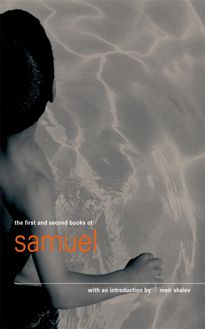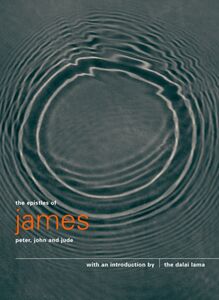-
 Univers
Univers
-
 Ebooks
Ebooks
-
 Livres audio
Livres audio
-
 Presse
Presse
-
 Podcasts
Podcasts
-
 BD
BD
-
 Documents
Documents
-
- Cours
- Révisions
- Ressources pédagogiques
- Sciences de l’éducation
- Manuels scolaires
- Langues
- Travaux de classe
- Annales de BEP
- Etudes supérieures
- Maternelle et primaire
- Fiches de lecture
- Orientation scolaire
- Méthodologie
- Corrigés de devoir
- Annales d’examens et concours
- Annales du bac
- Annales du brevet
- Rapports de stage
La lecture à portée de main
Vous pourrez modifier la taille du texte de cet ouvrage
Découvre YouScribe en t'inscrivant gratuitement
Je m'inscrisDécouvre YouScribe en t'inscrivant gratuitement
Je m'inscrisEn savoir plus
Vous pourrez modifier la taille du texte de cet ouvrage
En savoir plus

Description
Sujets
Informations
| Publié par | Canongate Books |
| Date de parution | 01 janvier 1999 |
| Nombre de lectures | 0 |
| EAN13 | 9780857861023 |
| Langue | English |
Informations légales : prix de location à la page 0,0050€. Cette information est donnée uniquement à titre indicatif conformément à la législation en vigueur.
Extrait
Contents
Title Page a note about pocket canons introduction by joanna trollope the book of ruth 1 2 3 4 the book of esther 1 2 3 4 5 6 7 8 9 10 Copyright
a note about pocket canons
The Authorised King James Version of the Bible, translated between 1603–11, coincided with an extraordinary flowering of English literature. This version, more than any other, and possibly more than any other work in history, has had an influence in shaping the language we speak and write today.
Twenty-four of the eighty original books of the King James Bible are brought to you in this series. They encompass categories as diverse as history, philosophy, law, poetry and fiction. Each Pocket Canon also has its own introduction, specially commissioned from an impressive range of writers, to provide a personal interpretation of the text and explore its contemporary relevance.
introduction by joanna trollope
Author of eagerly awaited and bestselling novels often centred around the domestic nuances and dilemmas of life in contemporary England, Joanna Trollope is also the author of a number of histori cal novels and of Britannica’s Daughters , a study of women in the British Empire. In 1988 she wrote her first contemporary novel, The Choir , and this was followed by A Village Affair , A Passionate Man , The Rector’s Wife , The Men and the Girls , A Spanish Lover , The Best of Friends , Next of Kin and most recently, Other People’s Children . She lives in Gloucestershire.
At first glance, it would seem natural, perhaps, to pair off the books of Ruth and Esther since they are the only two books in the Old Testament with women as their central characters, their heroines. At even a second glance, it might be tempting to see the two stories as applauding the courage and fortitude of women, a kind of remarkable early accolade to feminism. But a third glance reveals the reality. These two stories may star women, but only against the conventional biblical background of supreme male power; and if the women are celebrated, it is merely because of their ingenuity in exploiting that power. We are dealing it seems, with traditional, accepted romantic heroines – except that we are not. Love may come into both stories, lust even, but the loyalties the women in these stories show is most fiercely directed in the one case to another, older woman, and in the second case, to a race, to a people. If these women had merely been feisty examples of romantic femininity, they would not have taken such a hold as they have, on Jewish and Christian minds and hearts down the ages. It is their breadth and their differences that have given them their enduring power.
There are thirty-nine books in the King James Old Testament, from the first book of Moses, called Genesis, to Malachi . In most bibles, this works out at about a thousand pages. And for the first five hundred pages, we know roughly where we are; not just following the revelation of God’s will and purpose for mankind, but also pursuing the extraordinary story of the rise and fall of the nation of Israel, from the call of Abraham to the point in the fourth century BC when the Jews eventually emerged as a distinct religious community settled in a tiny corner of the Persian Empire.
So far, so reasonably manageable. But after the book of Nehemiah , the pattern disappears. The continuity of the story fragments and diffuses into something different and less accessible – into the (very broadly speaking) literature of the Hebrew people, into their prophecies and poetry, their wisdom and stories. Instead of reading the books of the Old Testament in sequence, we can read them individually. They aren’t exactly random but they aren’t, because of their separate natures, in narrative or development of thought order, either.
Some books, like those of the prophets, illuminate the history that has gone before as well as foretell the future. Some, like Psalms , from which hymns were used in Temple services, describe the nature and mood of Jewish worship after the exile of its people. And some – Ruth and Esther among them – are stories that, for various reasons, plainly became interwoven into Jewish life and faith, into its attitudes as well as its rituals.
Like all stories – at least stories that endure – the stories of Ruth and Esther are metaphors. At one level they are simple narratives – one romantic, one dramatic – but at another they are illustrations, or images, of human behaviour, human attitudes, human arbitrariness, human trial and error, human failing, human (with divine assistance) triumph. We may not be able to identify with the time and place, but in some way, however small, we can identify with some aspect of the human condition.
They are also in violent contrast to one another. Ruth is a story of simplicity and gentleness; Esther one of hatred and savagery. Both books were of course written pre-Christ, but only the book of Ruth , with its quiet virtues, its extolling of compassion and tolerance and honourable conduct, found favour with later Christian thinking. The name of God is invoked, called upon and blessed. Esther , on the other hand, never even mentions the name of God. Yet both have their place, and particular point, in this rich and amazing history of a remarkable people and their remarkable faith.
The book of Ruth , in the authorised version, now sits between Judges and the first book of Samuel . The Greek translators put it there because there is reference, in the first chapter, to the story having taken place ‘in the days when the judges ruled’. It could have been written before the Exile (598 BC ), it could have been written some time after, but its exact date is nothing like as important as the question raised by the mere fact of its inclusion in the first place. It’s a charming story, certainly, with an equally charming, peaceful, pastoral setting, among the Bethlehem barley fields at harvest time (a welcome relief after all the blood and thunder of Judges ). But it’s also something more significant and more muscular because it suggests that not all Jews of the period believed in the remorselessly tough racial laws that followed their return from exile – the ban on mixed marriage, the segregation of their people from any other, the open hostility to foreigners.
Ruth, you see, is not a Jew. She is a Moabitess. She marries a Jew who has come to live in Moabite country and, after his death, makes her immortal speech to her Jewish mother-in-law, Naomi: ‘Whither thou goest, I will go; and wher
-
 Univers
Univers
-
 Ebooks
Ebooks
-
 Livres audio
Livres audio
-
 Presse
Presse
-
 Podcasts
Podcasts
-
 BD
BD
-
 Documents
Documents
-
Jeunesse
-
Littérature
-
Ressources professionnelles
-
Santé et bien-être
-
Savoirs
-
Education
-
Loisirs et hobbies
-
Art, musique et cinéma
-
Actualité et débat de société
-
Jeunesse
-
Littérature
-
Ressources professionnelles
-
Santé et bien-être
-
Savoirs
-
Education
-
Loisirs et hobbies
-
Art, musique et cinéma
-
Actualité et débat de société
-
Actualités
-
Lifestyle
-
Presse jeunesse
-
Presse professionnelle
-
Pratique
-
Presse sportive
-
Presse internationale
-
Culture & Médias
-
Action et Aventures
-
Science-fiction et Fantasy
-
Société
-
Jeunesse
-
Littérature
-
Ressources professionnelles
-
Santé et bien-être
-
Savoirs
-
Education
-
Loisirs et hobbies
-
Art, musique et cinéma
-
Actualité et débat de société
- Cours
- Révisions
- Ressources pédagogiques
- Sciences de l’éducation
- Manuels scolaires
- Langues
- Travaux de classe
- Annales de BEP
- Etudes supérieures
- Maternelle et primaire
- Fiches de lecture
- Orientation scolaire
- Méthodologie
- Corrigés de devoir
- Annales d’examens et concours
- Annales du bac
- Annales du brevet
- Rapports de stage




















